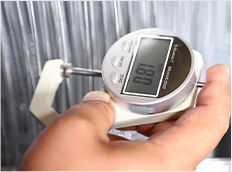poultry brooder cages
Nov . 08, 2024 16:14 Back to list
poultry brooder cages
Understanding Poultry Brooder Cages An Essential Component in Poultry Farming
Poultry farming is a significant agricultural sector worldwide, providing a substantial source of protein through eggs and meat. As in any farming endeavor, the right tools and equipment play a crucial role in ensuring the success and efficiency of the operation. One essential component in raising poultry, particularly chicks, is the use of brooder cages.
Brooder cages are specialized enclosures designed to house young birds in a controlled environment. They provide a safe and warm place for chicks to grow, ensuring that they receive the necessary care and conditions in their early life stages. The importance of proper brooding cannot be overstated, as it greatly influences the health and growth of the birds.
The Importance of Brooder Cages
The primary function of a brooder cage is to simulate the warmth and protection that mother hens naturally provide to their chicks. Since chicks are highly vulnerable in their first weeks of life, maintaining a consistent temperature, humidity level, and a clean space is imperative. A well-constructed brooder cage allows farmers to achieve these critical conditions with greater ease than open housing systems.
The advantages of using brooder cages extend beyond just temperature control. These cages help minimize the risk of diseases that can easily spread in larger, uncontained environments. A controlled space reduces stress, which is vital for the healthy development of chicks. Additionally, brooder cages can also simplify feeding and watering, ensuring that each bird receives the necessary nutrition without the competition and chaos that can occur in larger group settings.
Design Features of Brooder Cages
Brooder cages come in various designs, accommodating different numbers and types of poultry. A typical brooder cage may include features such as adjustable height, ventilation systems, and easily cleanable surfaces. The ability to adjust the height helps in maintaining optimal temperatures as the chicks grow, while proper ventilation ensures that fresh air circulates within the space—a critical factor in preventing respiratory issues.
poultry brooder cages

Another important aspect of brooder cages is the inclusion of heating elements. Whether using heat lamps, electric brooders, or infrared heaters, these systems must be carefully monitored to keep the temperature within the ideal range of 90°F to 95°F during the first week of life. Temperature should then be gradually reduced as the chicks mature, aiding in their acclimatization to cooler conditions.
Best Practices for Using Brooder Cages
To maximize the benefits of brooder cages, several best practices should be followed. Firstly, the bedding material should be changed regularly to minimize pathogens and ensure a clean environment. Straw, wood shavings, or other absorbent materials are often used.
Secondly, it’s critical to monitor the chicks closely for signs of stress or health issues. Proper feed and clean water should always be available, and observing the chicks will help determine if they are comfortable in their environment.
Lastly, providing adequate space is essential. Overcrowding can lead to aggressive behavior and increased stress among the birds. The general recommendation is to allow at least one square foot of space per chick in the brooder until they are ready to move to larger quarters.
Conclusion
In conclusion, poultry brooder cages are an indispensable tool in the expansion of successful poultry farming practices. They provide the necessary control and care for young birds, facilitating a smoother transition as they grow into robust, healthy adults. Investing in proper brooder cages, along with following best practices, can lead to higher survival rates and healthier poultry, ultimately benefiting both farmers and consumers alike. As the demands for poultry products continue to rise, the importance of effective brooding techniques will undoubtedly grow, solidifying the role of brooder cages in modern agriculture.
-
Automatic Feeding Line System-Pan Feeder Nipple Drinker|Anping County Yize Metal Products Co., Ltd.
NewsJul.29,2025
-
Hot Sale 24 & 18 Door Rabbit Cages - Premium Breeding Solutions
NewsJul.25,2025
-
Automatic Feeding Line System Pan Feeder Nipple Drinker - Anping County Yize Metal Products Co., Ltd.
NewsJul.21,2025
-
Automatic Feeding Line System Pan Feeder Nipple Drinker - Anping County Yize Metal Products Co., Ltd.
NewsJul.21,2025
-
Automatic Feeding Line System - Anping Yize | Precision & Nipple
NewsJul.21,2025
-
Automatic Feeding Line System - Anping Yize | Precision & Nipple
NewsJul.21,2025






